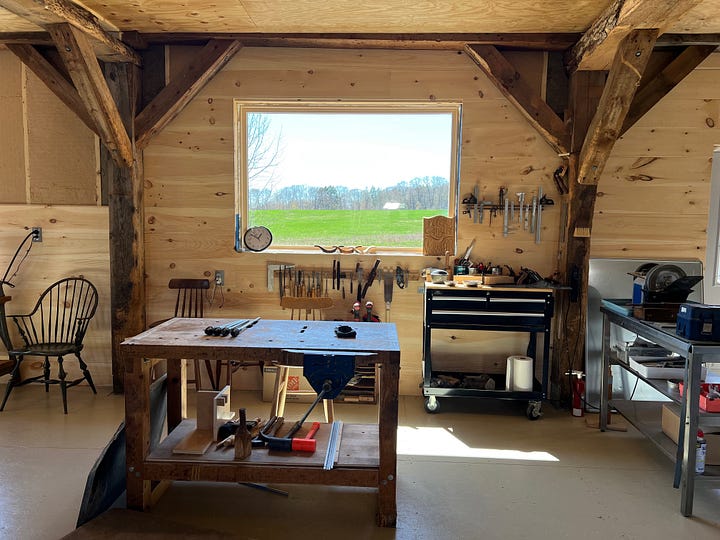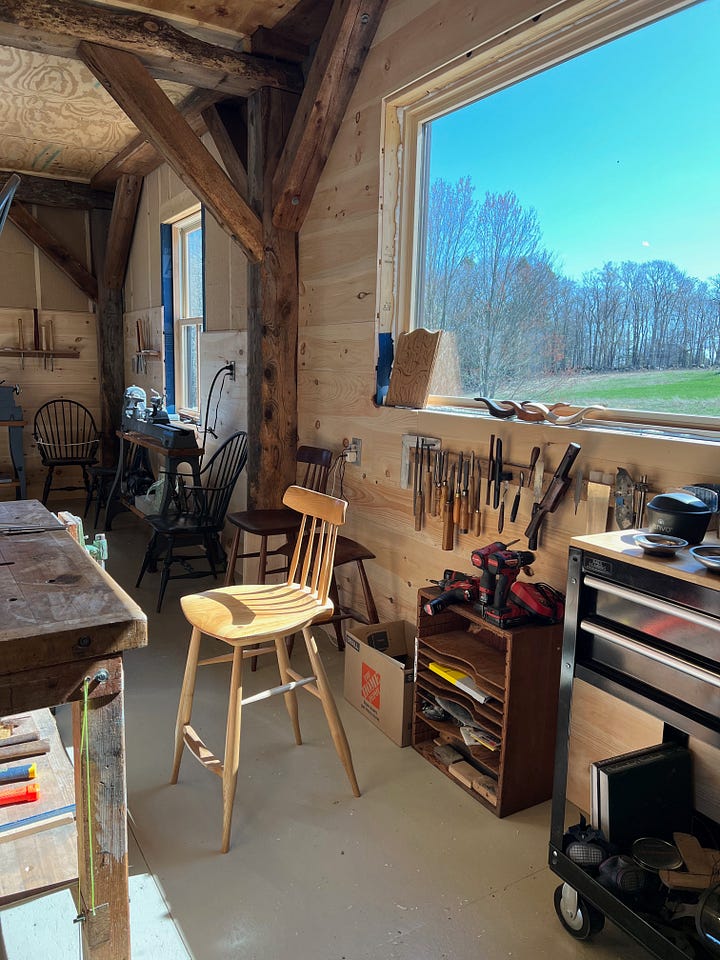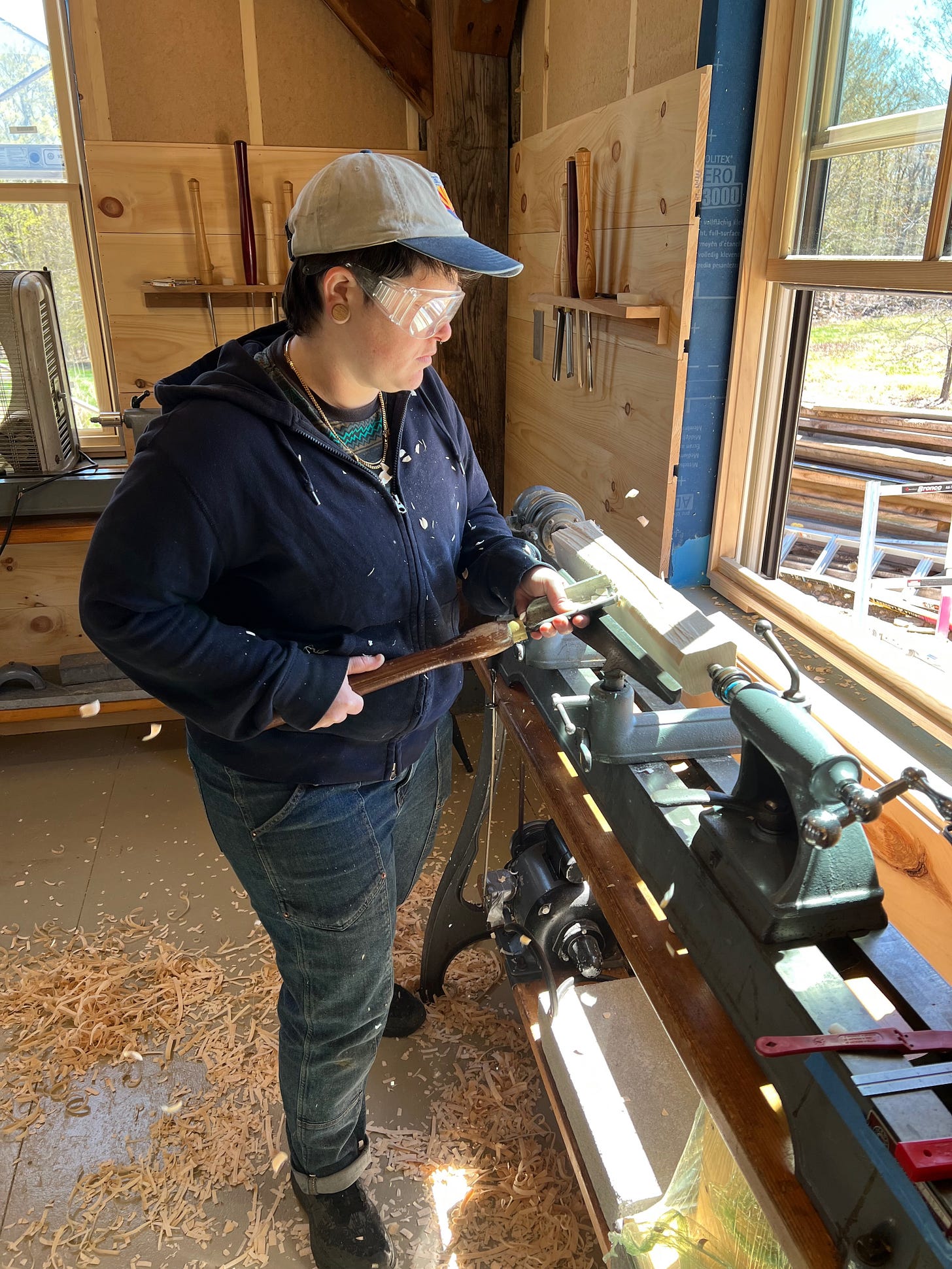First of all, thanks for your patience lately. As I’ve been setting up the new workshop, I haven’t had time to clip my fingernails, let alone sit down to write. But now that I’m wrapping up the move, I am turning back to making things and writing. I’m so grateful for your support, it has helped me create this making/ learning space that is going to benefit lots of different people. The workshop is far exeeding my expectations. It’s highly functional and beautiful, here are a few of the latest shots of the space. I’ve said it many times, usually to bewildered looks, but I live here largely because of the light. It’s such a strong, warm light that it fills me with a sense of well being.



On to the post.
I don’t love drilling holes. What I do love is shaping wood. If the mortise part of the joints magically appeared, I’d be fine with that. But what I do get excited about is grinding drill bits; it’s another shaping opportunity that I find fascinating and enjoyable.
I think this is a topic that sends most folks reaching for a google search in hopes of finding a bit to solve their problems with the click of a button. I’ve never been satisfied with this solution because it’s expensive, usually doesn’t live up to the hype and the bits are difficult to maintain. The life story of a drill bit from brand new to uselessly dull is often a one-way street. The only guarantee being that it will get worse every time you pick it up until you angrily (I can’t be the only one) relegate it to the drawer with all the other “rejects”. I find this especially sad because drill bits are actually relatively simple to alter and sharpen. The alterations can make a bit better than anything you can buy and the ease of resharpening ensures you have a razor sharp bit until you’ve worn it to a nub.
I understand the impulse to avoid messing around with drill bits. The machined perfection and gleaming flutes of a new drill bit seem to say “KEEP OUT”. It does seem like something one would be more likely to make worse than better. But here’s the good news, you have nothing to lose. You already have a bunch of worn out old bits so you might as well get them out, play around and very likely surprise yourself with the results.
I’ve ground my own bits for years, and the benefits are many. I buy inexpensive but super high quality high speed steel machine bit (just a few dollars a piece) that serve as the blanks for my grinding. I’ve made tons of different styles of bits with different geometries over the years and have settled on a Bismark style bit with a slight alteration to what I show in my book. My friends Kyle Barton and Patrick Brennan took the Bismark and made an alteration that lowered the relief angle (more on relief angles) so that exiting the hole is exceedingly smooth, eliminating the need for any backing or even setting the clutch on the drill. I’m getting a bit ahead of myself. I’m going to do this as a series and take it a bit slow because I think one of the hardest parts of this is believing you can do it. Drilling is simple physics, and the bit doesn’t have to be “perfect” to perform perfectly.
First let’s define the performance I’m looking for. My goal is to have a correctly angled hole that has no tear out on the entry, no blowout on the exit and isn’t glazed or torn up on the interior. Drilling at an angle, which is is how I drill nearly all of my mortises, requires a longer center point than most bits come with. The main reason standard twist bits are terrible in wood is because they lack a center spur and wander when drilling at an angle and don’t have the knickers and geometry to give a clean entry/exit hole. The bits I grind don’t require knickers, partially because of the geometry and, partially because they are razor sharp (and easy to keep that way).
Most of this series is going to be behind the paywall. If you don’t already, I hope you will consider subscribing/ supporting for full access. If you have been supporting me, please consider this a heartfelt thanks for your generosity and patience.






Peter, I’m looking forward to your series on drill bits. After watching you do this three times in class and I played with this on my own and ended up with some bits that gave me great results. Unfortunately I don’t do it often enough and have to figure it out again each time. It looks like you have moved away from using Brad points? I’m curious about that. Looking forward to seeing the new shop this summer!
Pete you described me perfectly. Thanks for taking this topic slowly. I look forward to every word.